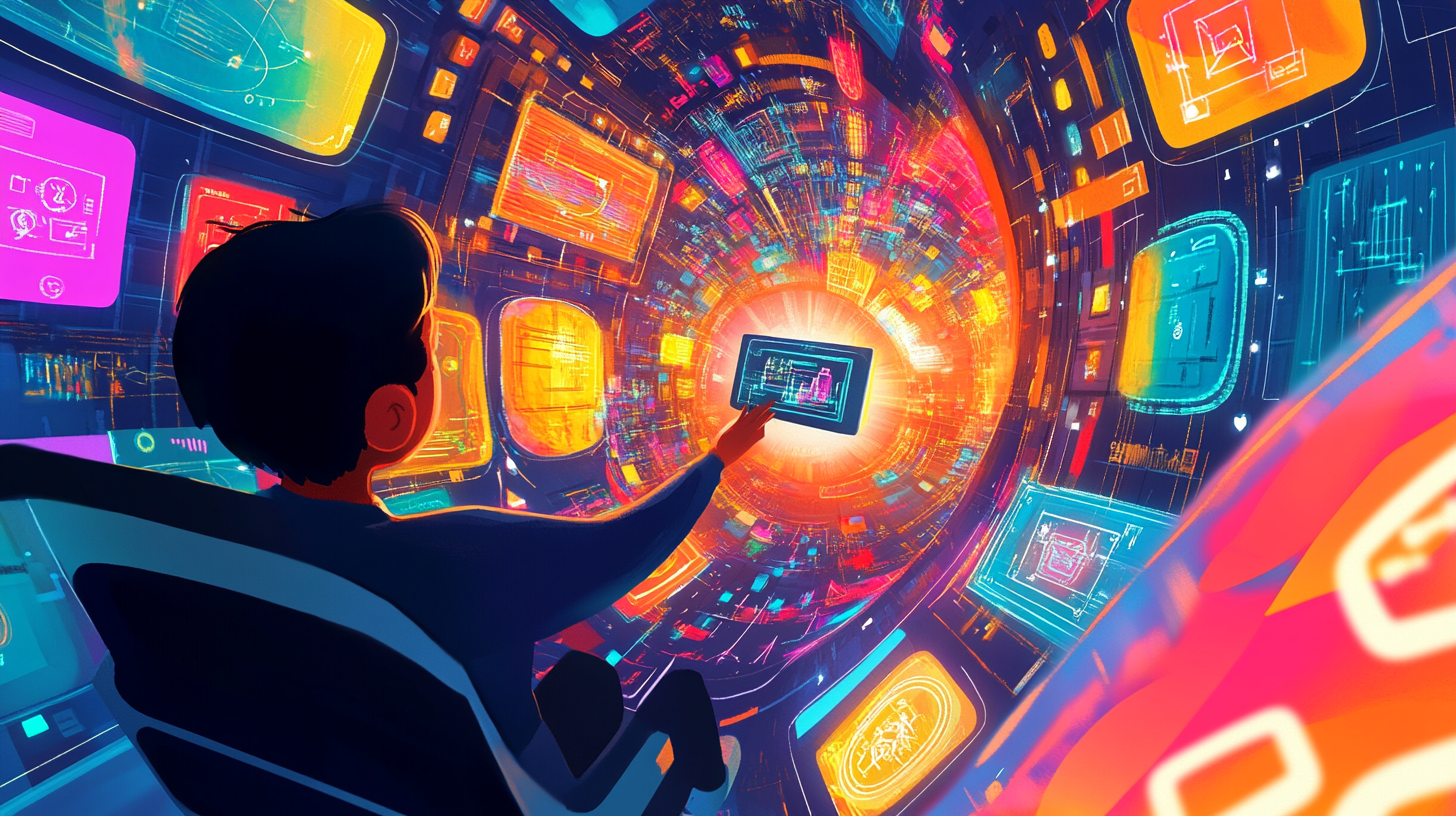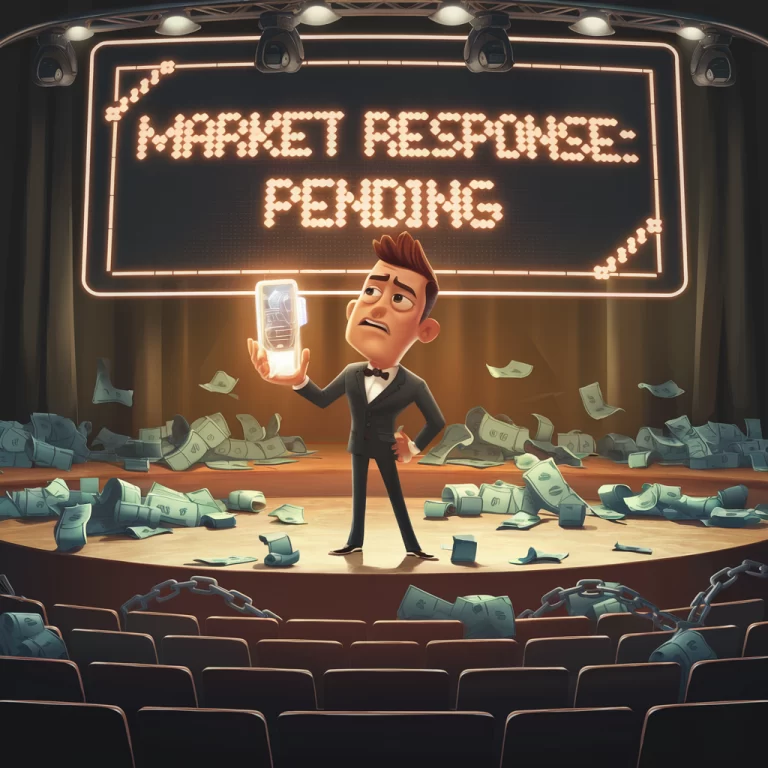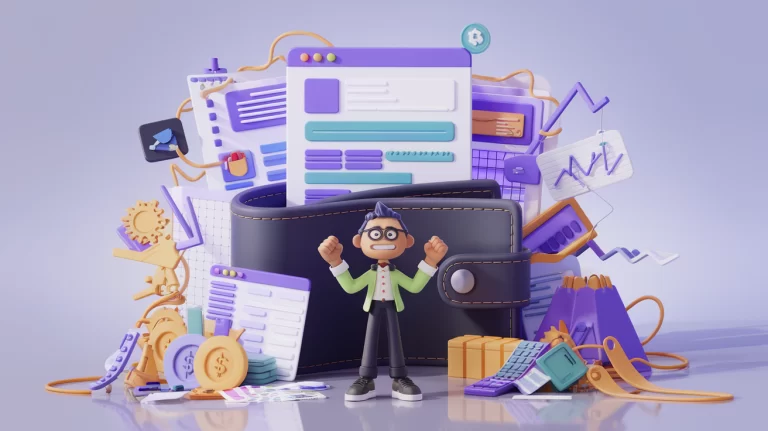Hey there, ecommerce maverick! 👋 Are you ready to have your entrepreneurial mind blown? Buckle up, because we’re about to take a wild ride through the business model multiverse. These aren’t your grandpa’s dusty old strategies – oh no, my friend. We’re talking about the cutting-edge, paradigm-shifting, “holy-cow-that’s-genius” kind of models that are turning industries upside down faster than you can say “disruptive innovation.”
So, grab your favorite caffeinated beverage (no judgment if it’s your third espresso of the day), and let’s dive into the top 10 business models that are making waves and inspiring facepalms from entrepreneurs who wish they’d thought of them first.
1. Platform Power: The Digital Matchmaker
Remember when your Aunt Edna tried to set you up on blind dates? Well, platform-based businesses are like Aunt Edna on steroids – but way less awkward and infinitely more successful. These digital matchmakers are the ultimate connectors, bringing together buyers and sellers faster than you can swipe right on Tinder.
How it works: Platform businesses create a digital marketplace where users can interact, transact, and maybe even find true love (okay, maybe not that last part, but who knows?).
Ecommerce example: Think Etsy, the crafty cousin of the ecommerce world. It’s a platform that connects artisans with craft-hungry consumers, proving that one person’s hand-knitted cat sweater is another person’s treasure.
Pro tip: The key to platform success is achieving critical mass. It’s like throwing a party – you need enough cool people (users) to show up before it really starts rockin’.
2. Subscription Sensation: The Gift That Keeps on Giving
Ah, subscriptions – the business model that makes customers feel like it’s their birthday every month. It’s the “set it and forget it” of the business world, bringing joy to customers and steady revenue to businesses.
How it works: Customers sign up for regular deliveries of products or services, usually for a monthly fee. It’s like having a personal shopper, but without the judgmental looks when you order that third pair of leopard-print leggings.
Ecommerce example: Dollar Shave Club turned the mundane task of buying razors into a hip, subscription-based experience. They proved that even something as boring as shaving can be sexy with the right marketing (and a hilarious viral video).
Reality check: While subscriptions can be a goldmine, remember that customers can cancel faster than you can say “unsubscribe.” Keep that value proposition strong, or you’ll be ghosted quicker than a bad Tinder date.
3. Freemium Frenzy: The “First Taste is Free” of the Digital World
Freemium is like that friend who always offers you a bite of their dessert – but charges you for a whole slice if you want more. It’s a tantalizing taste of what’s possible, leaving customers hungry for the full experience.
How it works: Offer a basic version of your product or service for free, then charge for premium features. It’s the digital equivalent of “if you like it, then you should’ve put a ring on it.”
Ecommerce example: Mailchimp starts you off with a free email marketing plan, but as your subscriber list grows, so does the need for their paid features. Before you know it, you’re hooked on those sweet, sweet email automations.
Fun fact: The term “freemium” is a portmanteau of “free” and “premium.” It’s like the “Brangelina” of business models, but with a much happier ending.
4. On-Demand Delight: The “I Want It Now” Revolution
Remember Veruca Salt from “Willy Wonka”? Her “I want it now” attitude has become the battle cry of the modern consumer. On-demand services are here to fulfill our every whim, faster than you can say “instant gratification.”
How it works: Provide immediate access to products or services at the touch of a button. It’s like having a genie in your smartphone, minus the limited wishes and questionable fashion choices.
Ecommerce example: Instacart turned grocery shopping from a dreaded chore into a magical experience where food appears at your doorstep. It’s like having a personal food teleporter (patent pending).
Millennial appeal: On-demand services speak to the millennial desire for convenience and efficiency. Why spend an hour at the store when you could be at home, binge-watching “The Office” for the 17th time?
5. Sharing is Caring: The Collaborative Consumption Craze
The sharing economy is proof that your mother was right all along – sharing really is caring. It’s turned “what’s mine is yours” from a cute saying into a multi-billion dollar industry.
How it works: Allow people to monetize their underused assets by sharing them with others. It’s like a grown-up version of trading lunches in the school cafeteria, but with cars and apartments instead of PB&J sandwiches.
Ecommerce example: Poshmark created a platform for fashion lovers to buy and sell pre-loved clothing. It’s like raiding your stylish friend’s closet, but without the awkward “can I borrow this” conversation.
Environmental bonus: Sharing models often have a positive environmental impact. It’s like Captain Planet and Adam Smith had a love child that grew up to disrupt traditional industries.
6. AI-Powered Awesomeness: When Robots Become Our Overlords (In a Good Way)
Artificial Intelligence isn’t just for sci-fi movies anymore. It’s here, it’s real, and it’s making businesses smarter than a Jeopardy champion on a caffeine high.
How it works: Use AI and machine learning to analyze data, automate processes, and personalize experiences. It’s like having a super-smart intern who never sleeps, never complains, and never steals your lunch from the office fridge.
Ecommerce example: Amazon’s recommendation engine is like that friend who always knows exactly what you need before you do. “Oh, you bought a tent? You might also like this bear repellent and these emergency flares. You know, just in case.”
Dystopian disclaimer: Yes, AI is amazing, but let’s not forget the lessons from every sci-fi movie ever. Keep those robots in check, or we might end up in a “Terminator” situation. And trust me, none of us look as good in leather as Arnold.
7. Sustainability Superhero: Saving the World, One Business Model at a Time
Sustainability isn’t just a buzzword anymore – it’s a full-fledged business model that’s making green by being green. It’s like Captain Planet started an MBA program.
How it works: Create products or services that have a positive environmental or social impact. It’s business karma – do good, and good (profits) will come to you.
Ecommerce example: Allbirds took the shoe world by storm with their sustainable wool sneakers. They proved that you can look good, feel good, and do good – all while walking in shoes made from trees and sheep hair. It’s like wearing a forest on your feet, but way more comfortable.
Reality check: Greenwashing is real, folks. If you’re going to talk the sustainability talk, you better walk the eco-friendly walk. Customers can smell a phony faster than a composting bin in July.
8. Outcome-Based Awesomeness: Put Your Money Where Your Results Are
Outcome-based models are like that friend who always delivers on their promises. They’re all about results, baby – no ifs, ands, or buts.
How it works: Tie your product or service to specific, measurable outcomes. It’s like being a superhero – you only get paid if you save the day.
Ecommerce example: Stitch Fix combines AI with human stylists to deliver personalized fashion boxes. If the customer keeps the clothes, Stitch Fix wins. If not, they learn and improve. It’s like fashion roulette, but with better odds and way more style.
Pro tip: Clear communication is key in outcome-based models. Set realistic expectations, or you’ll end up with more unsatisfied customers than a restaurant that ran out of avocados during brunch.
9. Gig Economy Greatness: Where Everyone’s a Boss (Kind Of)
The gig economy is like a talent show where everyone gets a chance to shine. It’s turned “side hustle” from a hobby into a full-blown economic revolution.
How it works: Connect freelancers and short-term workers with those who need their services. It’s like musical chairs, but instead of music, it’s work opportunities, and instead of chairs, it’s paychecks.
Ecommerce example: Shopify’s Experts Marketplace connects ecommerce entrepreneurs with freelance designers, developers, and marketers. It’s like a dating app for business skills – swipe right for SEO expertise!
Millennial appeal: The gig economy speaks to the millennial desire for flexibility and work-life balance. Because why choose between being a dog walker, a graphic designer, and a part-time mermaid when you can be all three?
10. Blockchain Bonanza: Making Cryptocurrency Sexy (Well, Sexier)
Blockchain is like the James Dean of the tech world – misunderstood, a little dangerous, and undeniably cool. It’s not just for Bitcoin bros anymore; it’s revolutionizing how we think about transactions and trust.
How it works: Use decentralized, secure digital ledgers to record transactions. It’s like a digital version of that friend who always remembers who owes what after a night out – but without the awkward Venmo requests.
Ecommerce example: OpenBazaar is a decentralized marketplace where users can buy and sell goods using cryptocurrency. It’s like eBay, but with more privacy and fewer badly photoshopped images.
Reality check: While blockchain has huge potential, it’s still in its “wild west” phase. Approach with caution, or you might end up with more digital tumbleweeds than customers.
The Grand Finale: Your Business Model Mixtape
There you have it, folks – 10 innovative business models that are shaking things up faster than a bartender at a mojito-making competition. But here’s the kicker: the real magic happens when you start mixing and matching these models like a DJ at a Silicon Valley rave.
Imagine an AI-powered, blockchain-based, sustainable subscription service for on-demand gig workers. Okay, that might be taking it a bit too far (or is it? 🤔), but you get the idea. The possibilities are endless!
So, what’s your next move, ecommerce entrepreneur? Will you platform your way to success? Subscriptionize your way to steady revenue? Or will you unleash an AI-powered sustainability superhero on the world?
Whatever you choose, remember: in the world of innovative business models, the only limit is your imagination (and maybe some pesky laws of physics, but we’re working on disrupting those too).
Now go forth and innovate! And if you stumble upon the next big thing, remember your old pals at Bizlegos. We’ll be here, eagerly awaiting your success story – and maybe a small cut of those billions you’re about to make. 😉
Stay tuned for our upcoming blog posts:
5 Epic Business Model Fails That’ll Make You Feel Better About Your Life Choices
The Solopreneur’s Guide to Juggling Business Models (Without Dropping the Ball or Losing Your Mind)









